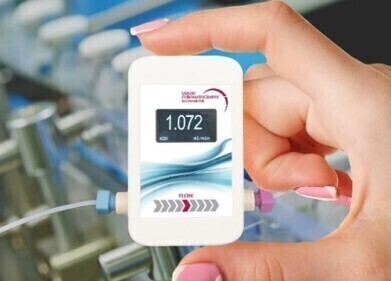HPLC, UHPLC
Looking at NoBody — Chromatography Helps to Discover a Microprotein Workhorse
Feb 03 2017
We might think we know how our bodies work — but researchers keep finding new ways to be surprised. One of the latest discoveries has recently been reported in the journal Nature Chemical Biology — A human microprotein that interacts with the mRNA decapping complex is the paper’s name, and it describes how researchers at Yale University and the Salk Institute devised a new detection strategy to find microproteins.
Microproteins — hiding in plain sight
Microproteins are proteins that are shorter than usual proteins and usually only have one domain. Other than that — not much is known about them. This is because of their size and the difficulty in finding them. The researchers in this study have identified a ‘new’ functional microprotein that is part of the human genome.
The problem for biologists is that these tiny proteins are usually hidden by all the other material in the cell. Traditional detection methods were no use in finding these microproteins. And if they couldn’t be seen, then biologists couldn’t be sure what their function was and whether they played any useful part in the life of a cell.
As Alan Saghatelian of the Salk Institute — one of the paper’s authors — said:
‘Despite how much we know about the human genome, there are still blind spots in the genome discovery algorithms. You can sequence the whole human genome and never know a protein, like this one, was there because it’s too short and falls below the usual length requirement for gene assignment algorithms.’
NoBody is home
The researchers at Yale identified a microprotein called NoBody — or non-annotated P-body dissociating polypeptide. In every cell in the body, DNA is transcribed into messenger RNA (mRNA) which goes to make a protein. But, after the protein is made the RNA must be stopped from making any more of the protein. All this is well known — it is taught at high school — but we didn’t know about the role of the microprotein NoBody.
To find the microproteins in the cell, the researchers combined genome sequencing and proteomics to find the non-annotated microproteins. The cell contents were isolated and the larger proteins removed. They then used liquid chromatography mass spectrometry proteomics to analyse the amino acid sequence of the proteins and microproteins in the sample. The use of chromatography for biological samples is discussed in the article, The use of High Performance Liquid Chromatography (HPLC) columns in Biomolecule analysis.
The researchers then developed a computational method so that they could build a database of all the possible proteins that could be in the samples — they also found over 400 new microproteins. The team suggest that microproteins play important roles in cell biology, including in diseases. Maybe one day NoBody could help us cure a disease.
Digital Edition
Chromatography Today - Buyers' Guide 2022
October 2023
In This Edition Modern & Practical Applications - Accelerating ADC Development with Mass Spectrometry - Implementing High-Resolution Ion Mobility into Peptide Mapping Workflows Chromatogr...
View all digital editions
Events
Jan 20 2025 Amsterdam, Netherlands
Feb 03 2025 Dubai, UAE
Feb 05 2025 Guangzhou, China
Mar 01 2025 Boston, MA, USA
Mar 04 2025 Berlin, Germany



.jpg)










